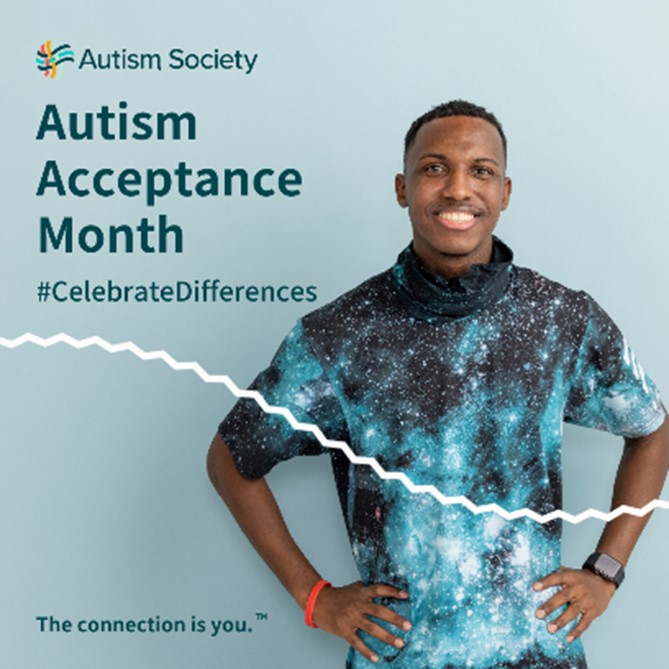Exploring a Strengths-Based Approach to Neurodiversity
April is Autism Acceptance Month, drawing attention to the needs and concerns of people on the autism spectrum and other neurodiverse individuals. A new book, “Neurodiversity: From Phenomenology to Neurobiology and Enhancing Technologies,” explores a strengths-based approach to a broad array of neurodiversity.

Lawrence K. Fung, M.D., Ph.D., assistant professor of psychiatry and behavioral sciences, Stanford University, and director of the Stanford Neurodiversity Project, offers an introduction to the strengths-based model of neurodiversity (SBMN). SBMN integrates and builds on existing concepts of positive psychology, positive psychiatry, multiple intelligences, and developmental psychology. Fung and colleagues translate the strengths-based approaches to neurodiversity into specific actions to support, educate, and enable people with neurodifferences to function successfully in educational and work environments.
Neurodiversity is defined as a “concept that regards individuals with differences in brain function and behavioral traits as part of normal variation in the human population.” This definition of neurodiversity includes autism, dyslexia (difficulties with reading, writing and spelling), ADHD, dyspraxia (problems with manual dexterity and coordination), dyscalculia (difficulties with math and calculation), dysphonia (disorders of the voice), Tourette syndrome, synethesia1 and other behavioral and neurobiological differences.
Neurodiversity is closely related to cognitive diversity — differences in how people think, Dr. Fung notes, and “depending on the context, traits of neurodiverse conditions can be seen as strengths or challenges.”
Drawing on the strengths-based model of neurodiversity, Fung and colleagues offer recommendations to support individuals. For example, suggestions for supporting those in higher education include:
- Lights that are as natural as possible.
- Reserved seating in locations to the front and side to help reduce ambient noise and distractions; reserved seating in the back for those who need to stand or move.
- Using webinar technology that allows students to alternate between viewing slides or images and the face of the presenter.
- Use of assistive technology, such as speech-to-text and text-to-speech software.
- Use of coaching, mentoring and peer group coaching.
- Support in transition from higher education to the workplace.
An estimated 80% of autistic adults are unemployed or underemployed. One example of an employer that has developed a comprehensive approach to employing people on the autism spectrum, described by Jose Velasco in a chapter in Neurodiversity, is SAP SE, a large software company. SAP’s Autism at Work program is considered a “business transformation initiative, designed to leverage the skills of qualified individuals on the spectrum.” Among the program's guiding principles is “meet in the middle”—employees on the autism spectrum receive training to integrate into neurotypical environments and neurotypical employees receive training to help better understand colleagues on the spectrum.
Among the Autism at Work program components is an enhanced hiring process with adaptations to the interview process, pre-employment training, and other features. It also has support for career planning and a variety of potential accommodations, such as work-style accommodations, skill/task adaptation, and teamwork adaptation. The Autism at Work support circle includes a team buddy, mentor, job coach, team manager and human resources business partner.
The field of neurodiversity is in its infancy. Much still needs to be investigated to further advance our understanding of its strengths; how those strengths can be uncovered accurately, efficiently and practically; and what interventions can be designed to improve the lives of neurodiverse individuals,” Dr. Fung concludes.
Footnote
- Synesthesia is a neurological condition in which stimulation of one sensory or cognitive pathway (for example, hearing) leads to automatic, involuntary experiences in a second sensory or cognitive pathway (such as vision). When one sense is activated, another unrelated sense is activated at the same time. For example, hearing music and at the same time sensing the sound as patterns of color. (Psychology Today, www.psychologytoday.com/us/basics/synesthesia
Reference
- Fung, L.K. (Ed). 2021. Neurodiversity: From Phenomenology to Neurobiology and Enhancing Technologies. American Psychiatric Association Publishing
